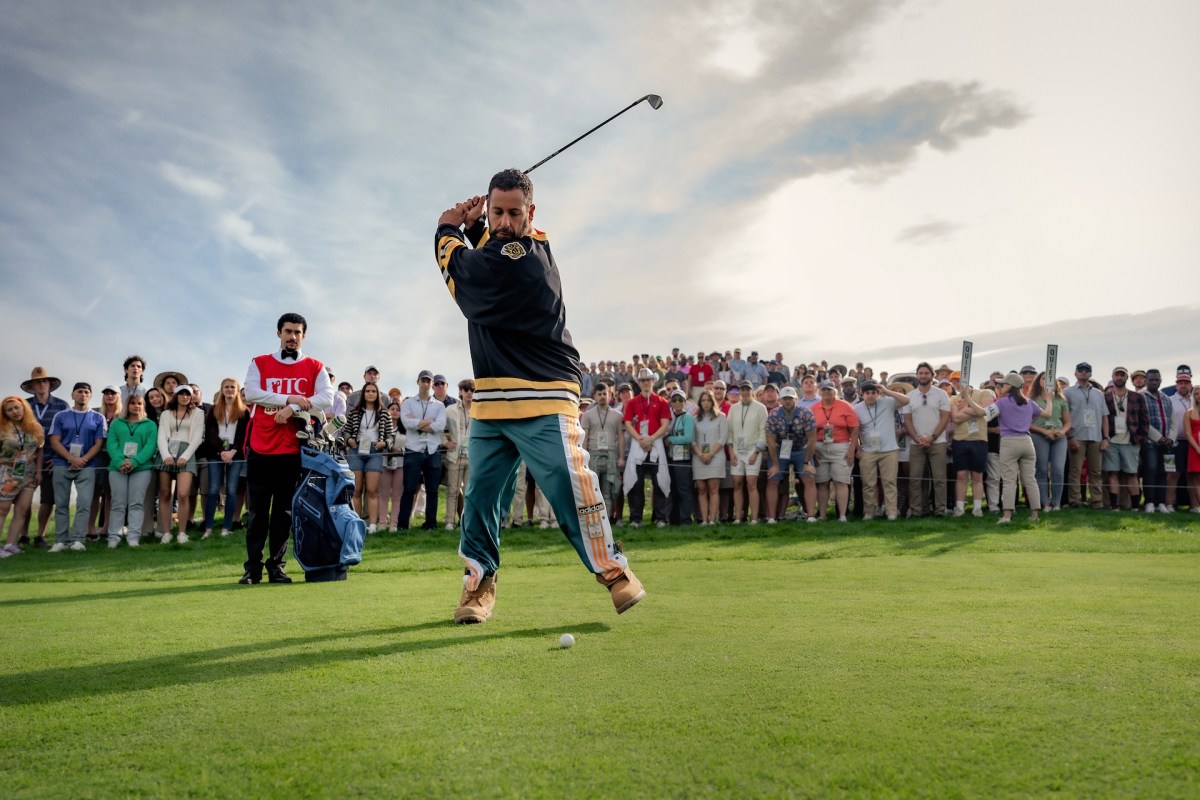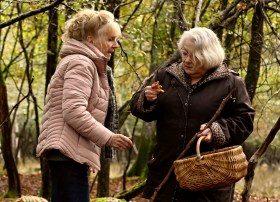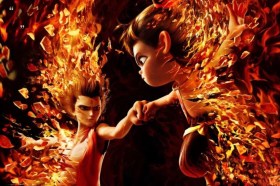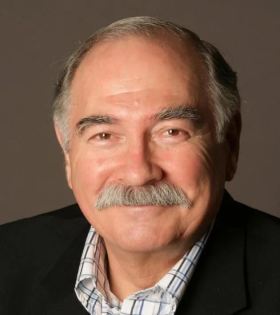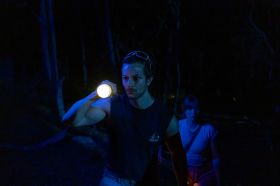In the 1996 film Happy Gilmore, Adam Sandler’s titular character transitions from ice hockey to golf after discovering his rage-fuelled puck-smacking technique can drive a ball 400 yards.
Upon learning his grandmother owes thousands to the IRS, Gilmore enters the PGA Tour in the hopes that the prize money will allow him to buy back her repossessed house. In the interim, he learns the art of golf from Chubbs Peterson (Carl Weathers), a former pro golf star who lost his hand in an alligator attack.
Most of Gilmore’s golf technique involves swearing, fighting, and throwing his clubs around the green (much to the ire of rival Shooter McGavin), and eventually honing a tee-off technique where he takes a running swing at the ball and lands it in the hole (it’s all in the hips).
Happy Gilmore 2: quick links
The character was actually inspired by Kyle McDonough, a childhood friend of Sandler’s who was also a former hockey player – and allegedly a mean hand at golf.
‘I actually went golfing with Kyle McDonough once,’ co-write Tim Herlihy recalls Sandler telling him (per New York Times). ‘And he was whacking it. It was his first time ever playing, and he was hitting it farther than me. What about a hockey player in the golf world?’
Happy Gilmore, the resulting film that was directed by Dennis Dugan (Grown Ups, Big Daddy), would go on to become a beloved film that highlighted Sandler’s prowess at playing irritable man children.
Despite the chaos of the film – and its terrible box office performance and critical reception – the film did more than achieve success as ‘that film your older brother puts on at sleepovers in the 90s’: it actually spawned a new generation of golf devotees.
In the world of the film, Gilmore’s unlikely success as a golfer brings new spectators to the sport – and into a world that was previously reserved for the wealthy elite. ‘Quite a large and economically diverse crowd here at the Michelob Invitational,’ remarks a commentator during one of Gilmore’s games.
The film’s release also saw an IRL increase in interest in golf in the final years of the 1990s, which started with its cult following in the golf community. Pro golf publications like Golf.com and Golf Digest all praised the film (especially the accuracy of villain Shooter McGavin), which made its popularity rise among both players and spectators of the sport.
While there isn’t exactly any measurable data correlating the viewing of Happy Gilmore to an increase in golf players, it can be said that the film definitely increased awareness of the sport and made the idea of it more accessible. Plus, a quick glance at R/golf (the sub Reddit for golf) finds many users who play the sport and anecdotally credit Happy Gilmore with their initial curiosity about it.
In the years since its release, many golf pros have copied Happy’s signature tee-off shot – the aforementioned running-start and hockey-powered swing. Among those pros are three-time major champion Pádraig Harrington and Jamie Sadlowski, the latter of whom was also a former hockey player.
There now sits an engraved tribute to Gilmore at the East Lake Golf Club in Atlanta, commemorating his fictional achievement of winning the 1996 tour championship.
‘[Did it make it] a bit sexier and trendier? I think, yes, absolutely it did!’ Kyle McDonough told The Telegraph. ‘Not everybody who loves Happy Gilmore plays golf, but I think everybody who actually likes golf loves the film.’
I don’t think too much of the film these days, but when I was a kid I thought it was comedy gold. And, if you grew up with the film like I did, it’s probably the first thing that comes to mind when golf is mentioned – right next to Lee Carvallo’s Putting Challenge.
Watch the original trailer for Happy Gilmore:
Regardless of what you think of the 1996 film, Happy Gilmore – together with the equally beloved Billy Maddison – was the catalyst that ensured Adam Sandler as one of the most recgonisable (and bankable) presences in comedy history.
After forming Happy Maddison pictures, named after the aforementioned films, Sandler’s screen works have accumulated over $3 billion in worldwide box office sales. His most recent signing of a Netflix deal worth $250 million is what led to Happy Gilmore 2, which debuted on the streamer last week (25 August).
Almost 30 years on, Sandler is back on the green as Gilmore, and he’s brought along some new faces to join the old. Original stars Julie Bowen, Ben Stiller (who was uncredited in the first film), and Christopher McDonald all get their time in the long-awaited sequel, while leaving room for new co-stars Bad Bunny, Blake Clark, and Sandler’s own daughters Sadie and Sunny.
A tonne of professional golfers also cameo in the new film, including John Daly, Paige Spiranac, Rory McIlroy, Scottie Scheffler, Bryson DeChambeau, Brooks Koepka, Justin Thomas, and Will Zalatoris.
Sandler and Herlihy wrote the script, and Dennis Dugan served as executive producer instead of director. This one is directed by Kyle Newachek, a fairly new kid on the scene who previously helmed just two pictures: Murder Mystery (also starring Sandler), and Game Over, Man!.
As for the plot? Well, now living life as a retired family man, Happy Gilmore must return to the PGA – and win – after realising that paying for his daughter’s ballet tuition fees is not possible.
Watch the trailer for Happy Gilmore 2:
‘Adam’s very aware of his characters and very aware of the culture,’ Newacheck told Netflix’s Tudum. ‘There’s been a wave of golf [popularity], so it feels like the movie is timely, just like it did in ’96. I remember asking him and him just saying, “It never felt like the exact right time until now.”‘
As for Newachek’s own memories of the original film, it may not have inspired him to be a golfer – but it certainly inspired him to work in the screen industry.
‘I remember [Happy Gilmore] being one of the last movies that I watched before I made this internal choice that, “Hey, that’s something that I want to do. I want to make movies like that,”‘ he told Tudum.
‘I understood the clash of high society, low society. ‘[My brother and I] loved the outsider coming into the country club. We identified with that so much.’
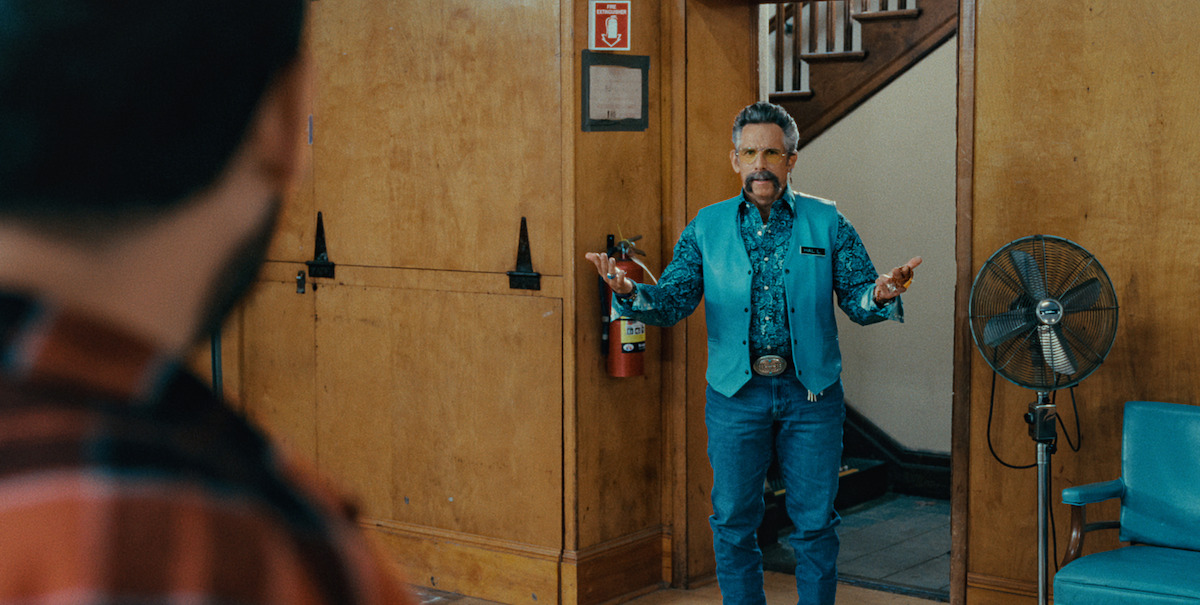
Does Happy Gilmore 2 work – and was it worth the wait?
With a Tomatometer average of 69% and a score of 52 on Metacritic, it won’t be winning awards any time soon. But then again, the original film was rated much worse (63% and 31, respectively), and still went on to be a household name.
‘The whole shebang works better than you might think,’ wrote one review of the sequel in Rolling Stone, ‘partly because nostalgia is one powerful narcotic and partly because you can’t underestimate the sheer pleasure of watching people get repeatedly hit in the nuts with balls.’
No criticism will phase Sandler anyhow, considering his ongoing multi-million dollar streaming deal and indefatigable star-power among Gen x and elder millennials. Let’s not act like his current film efforts are those of a likeable underdog.
As for how far it can drive influence in the modern golf community, we’ll have to wait and see.
